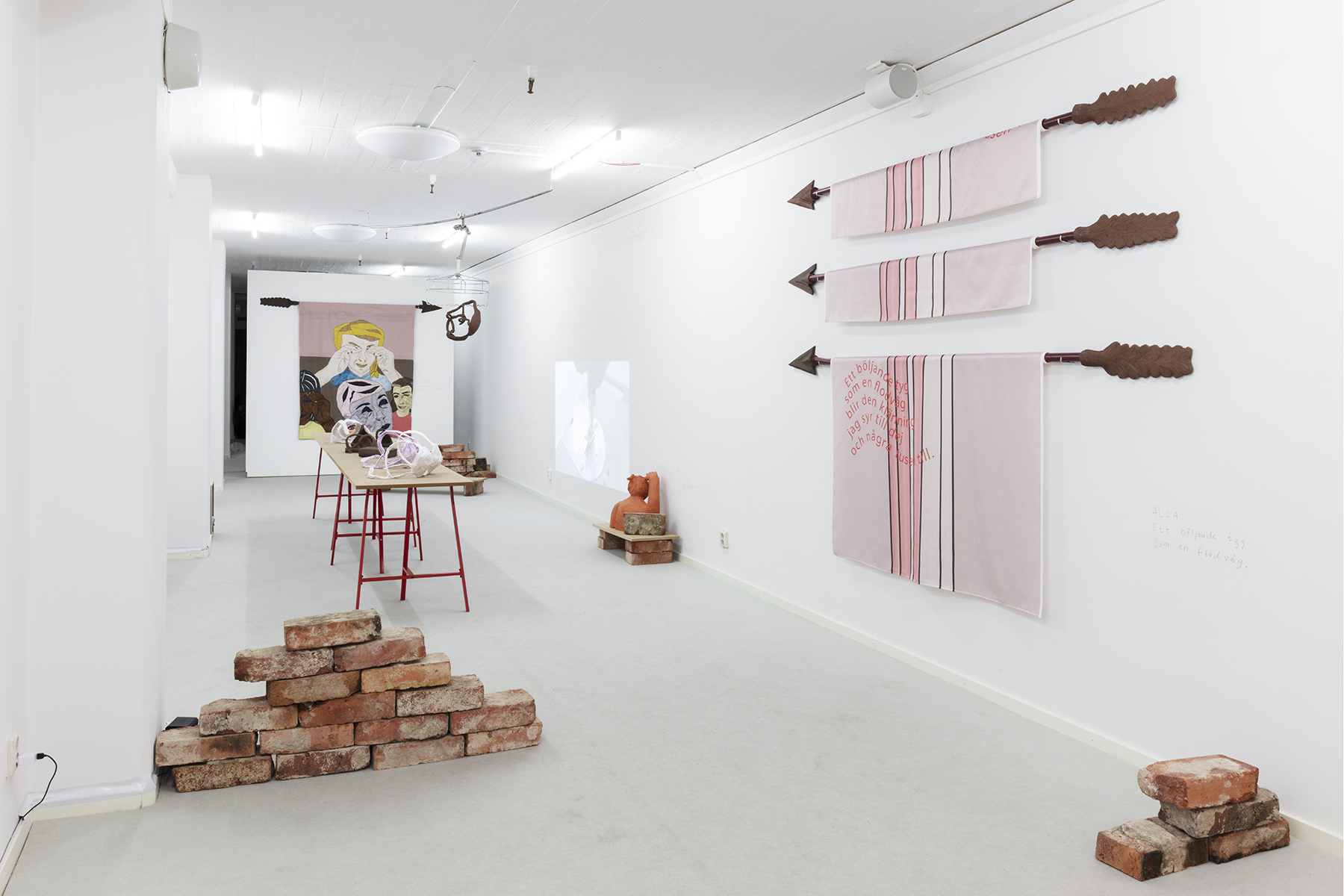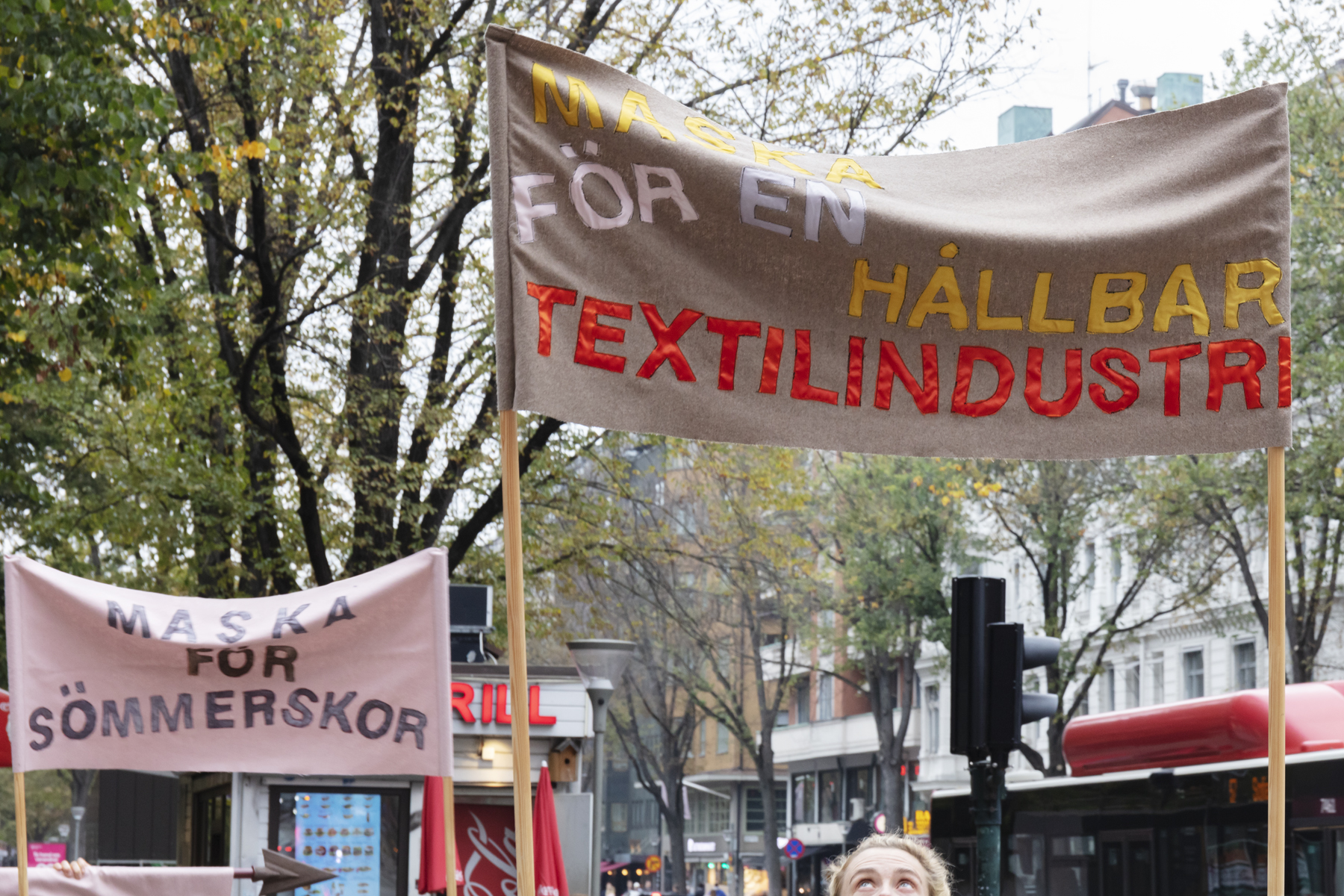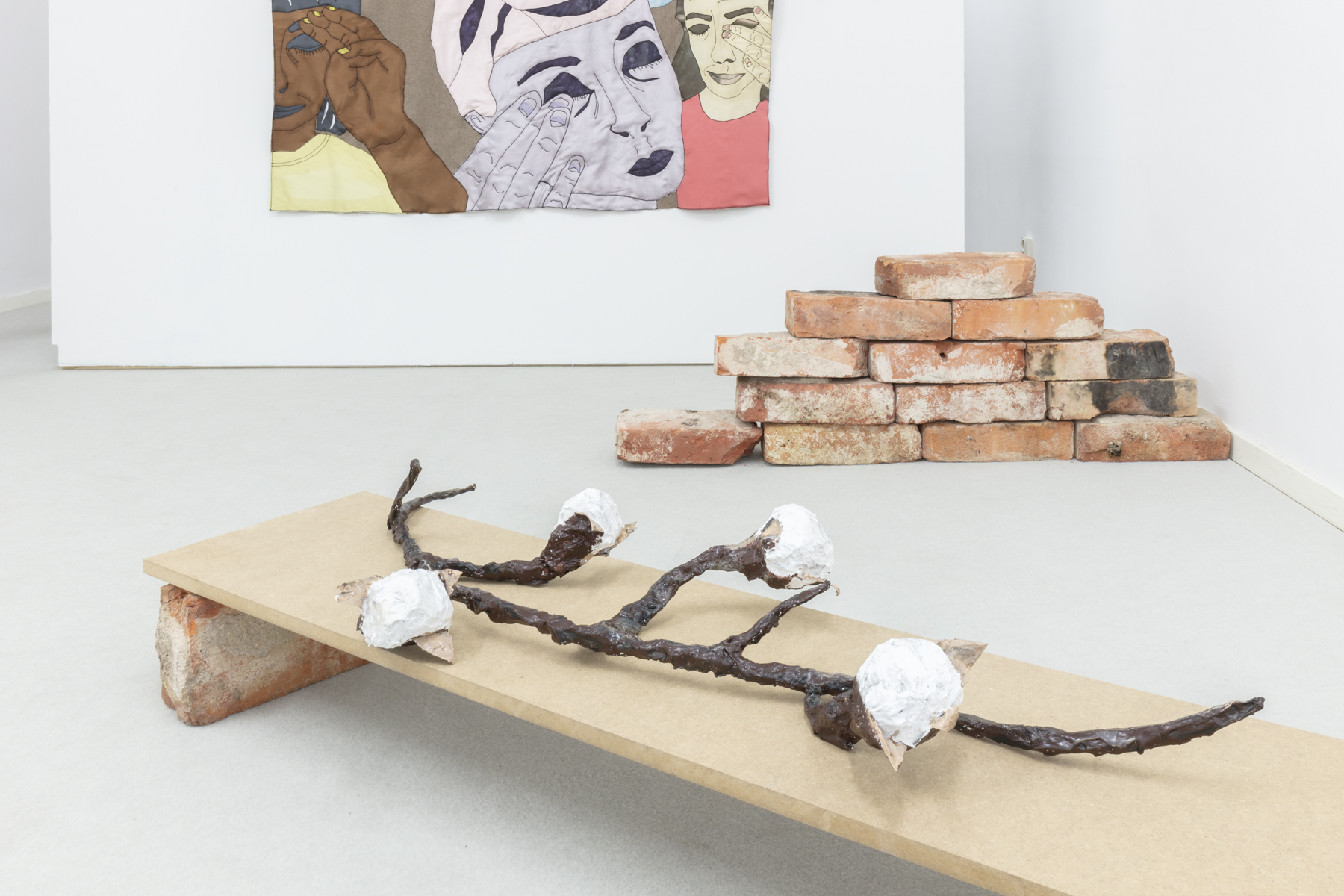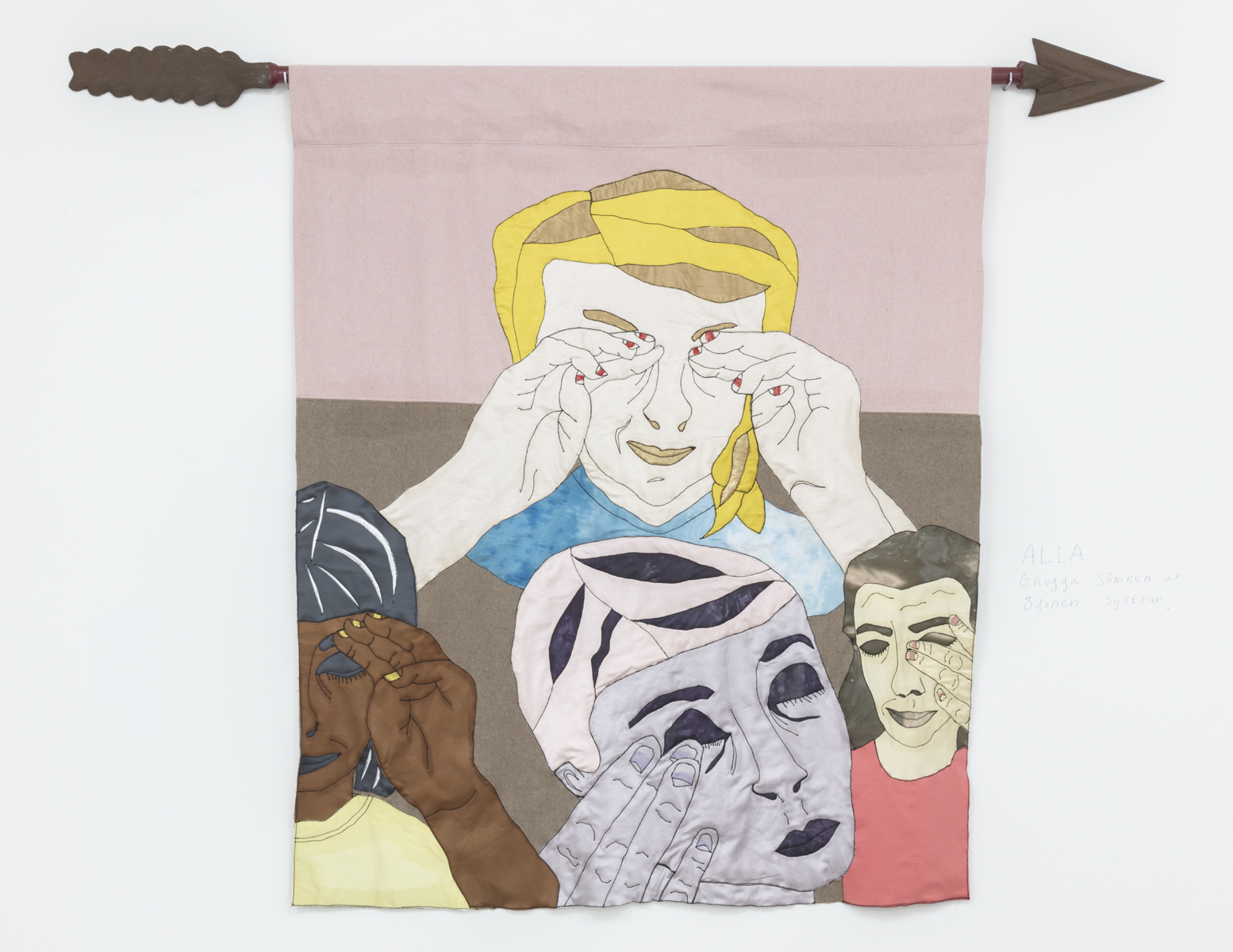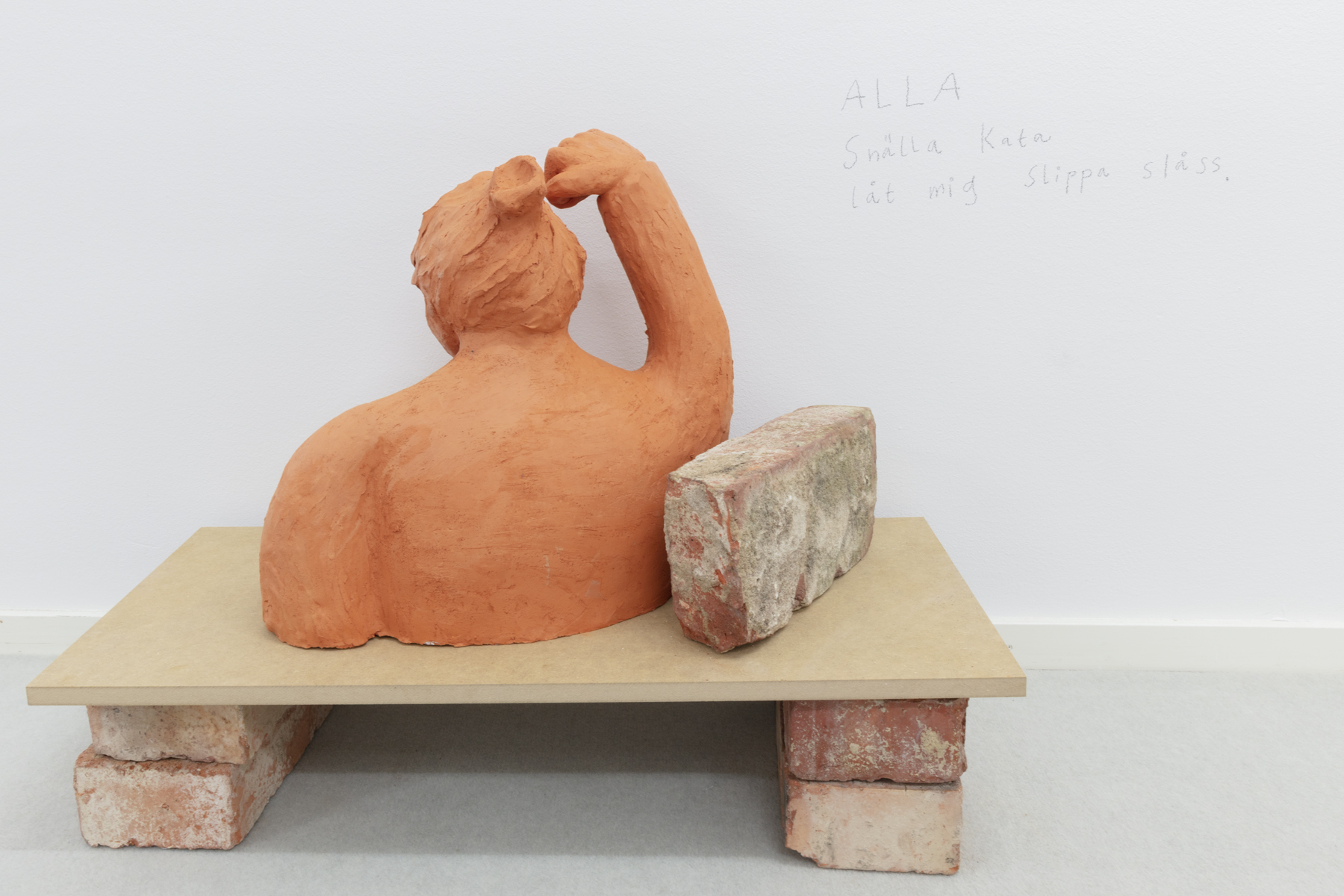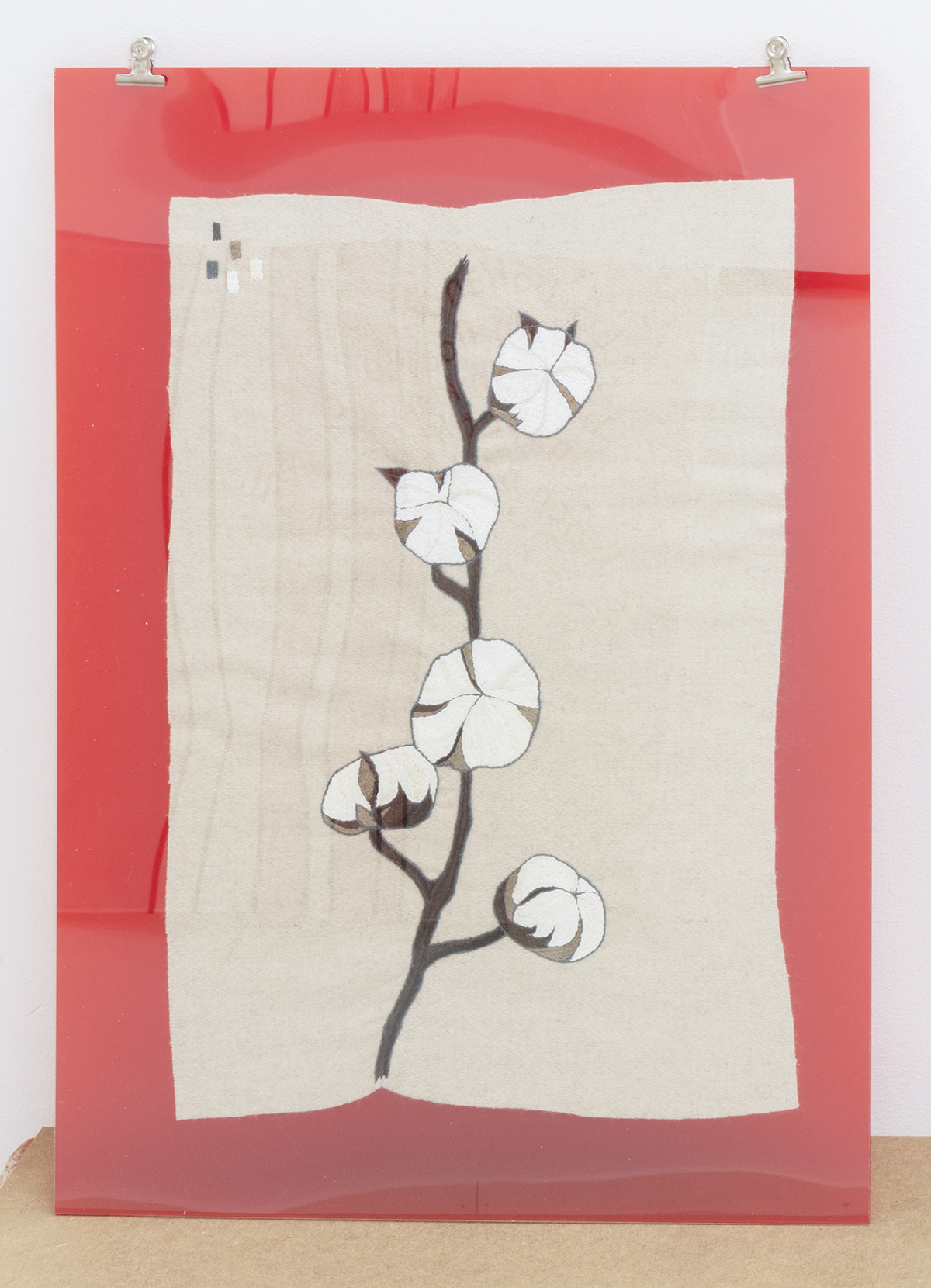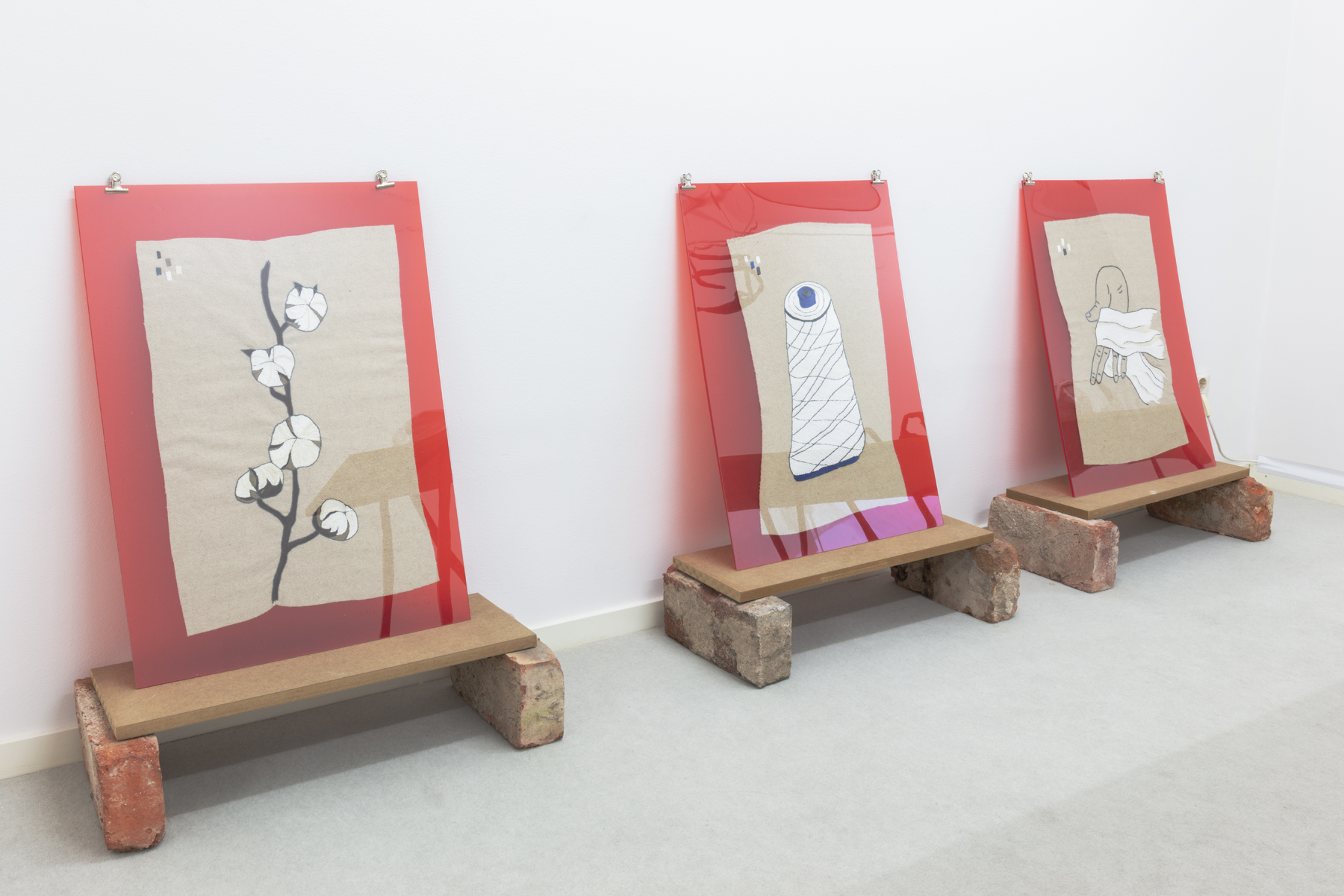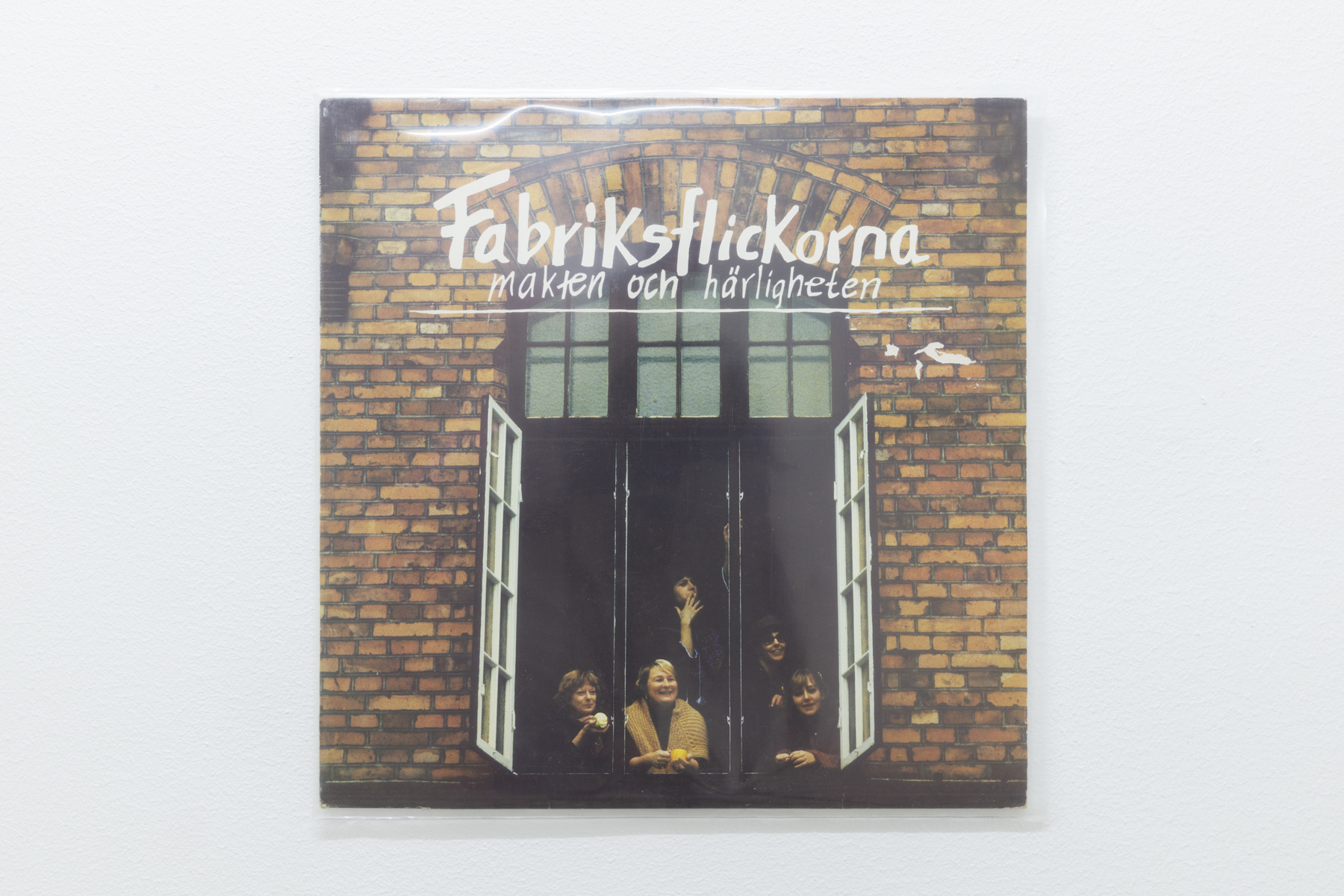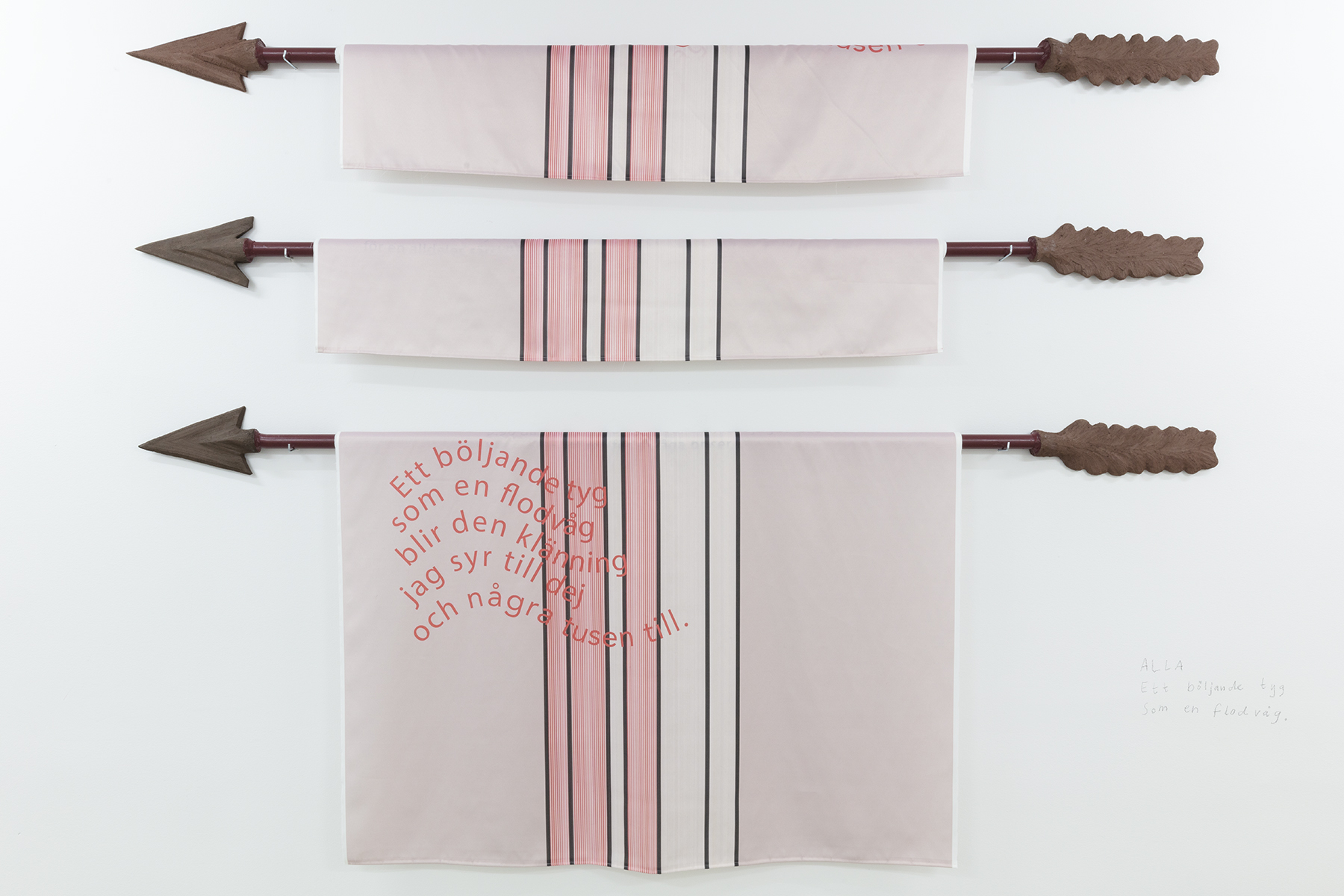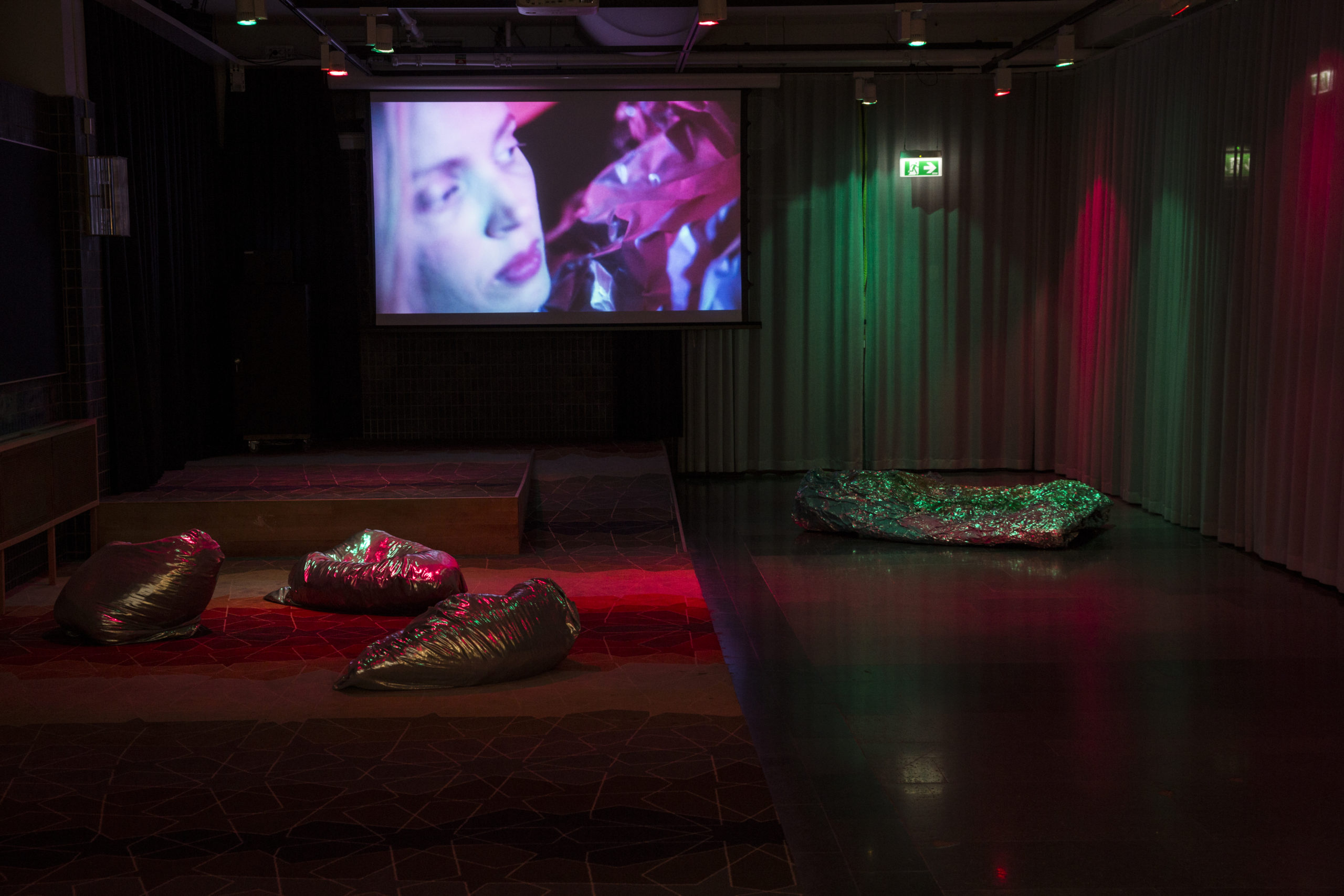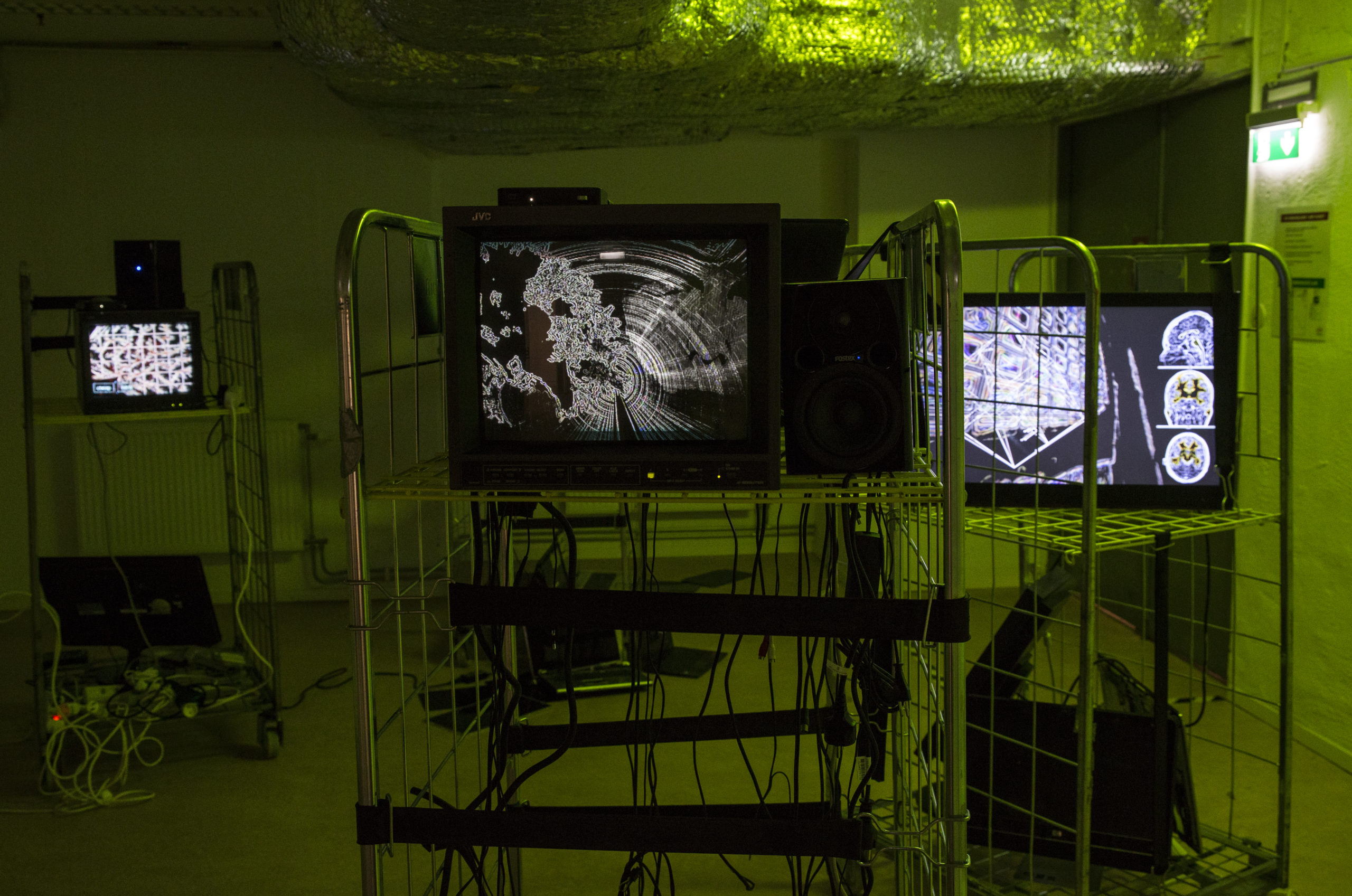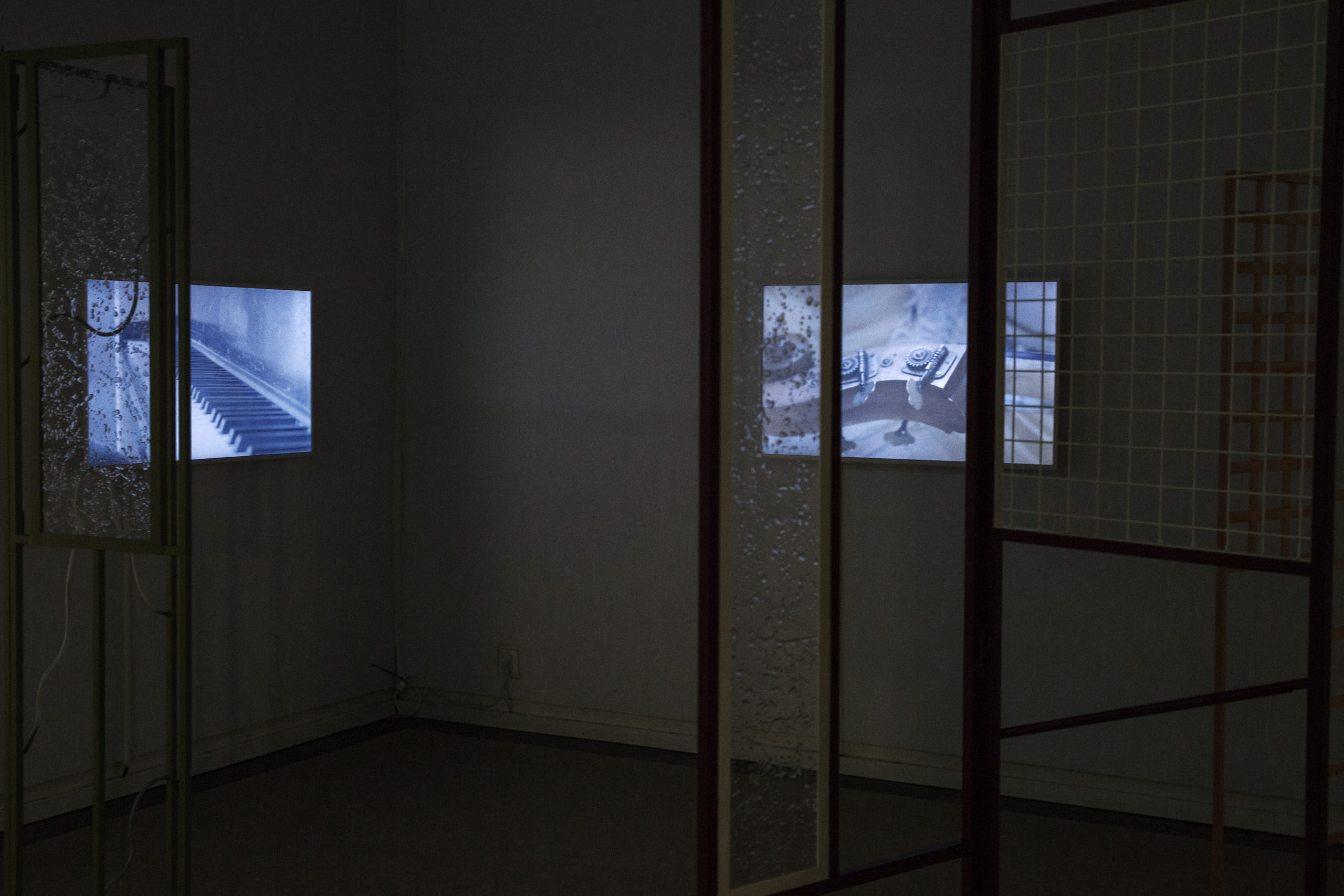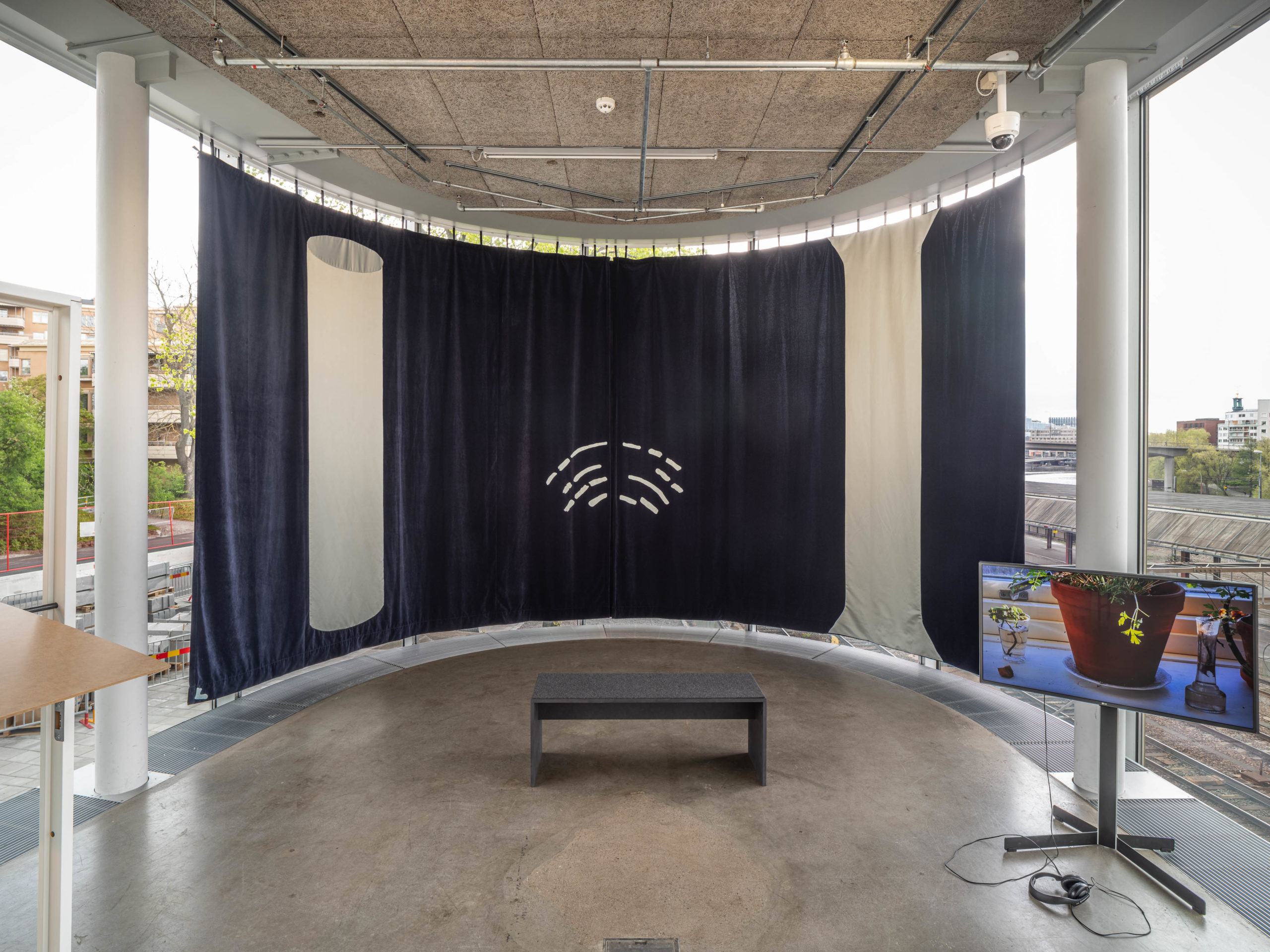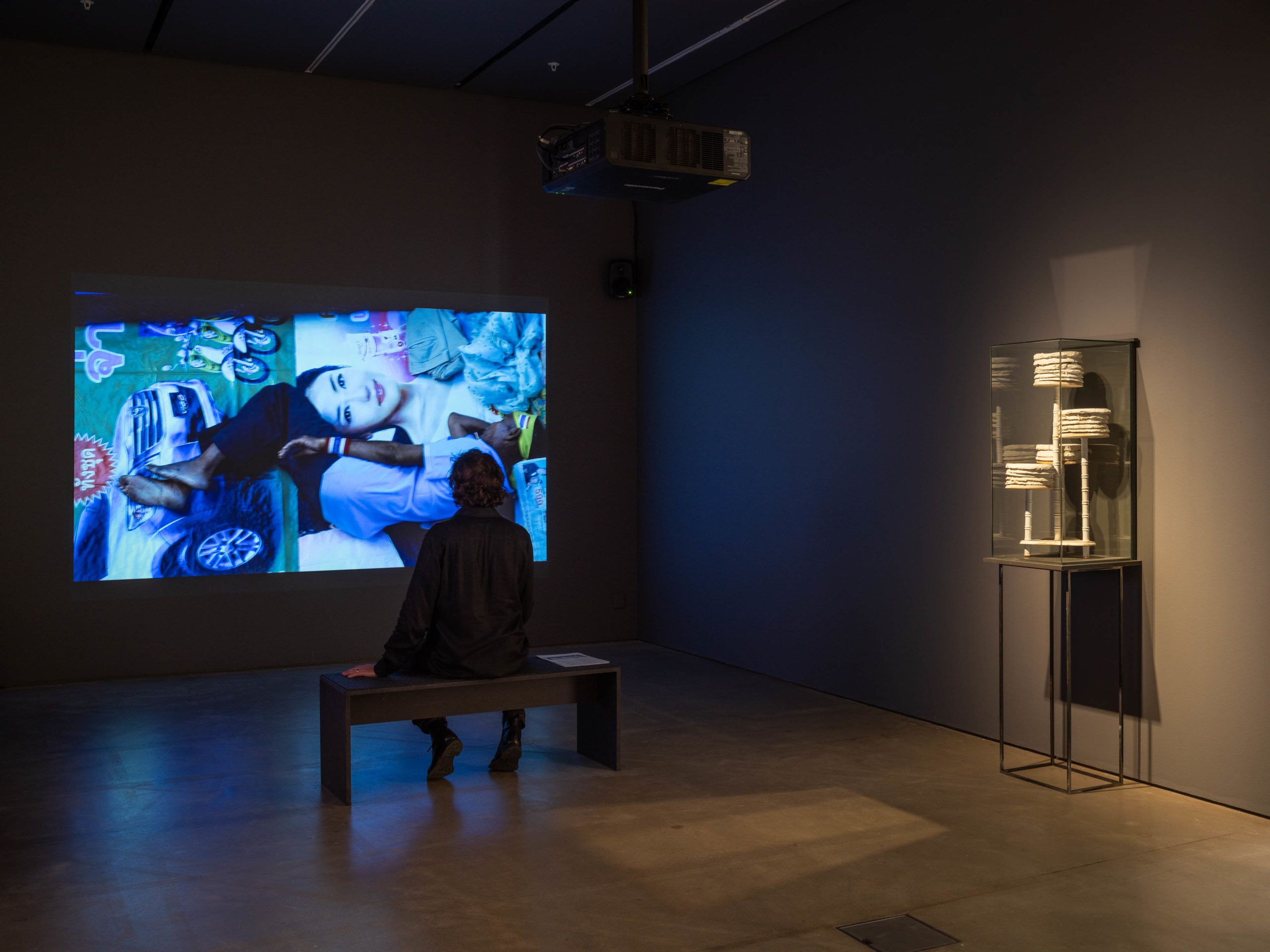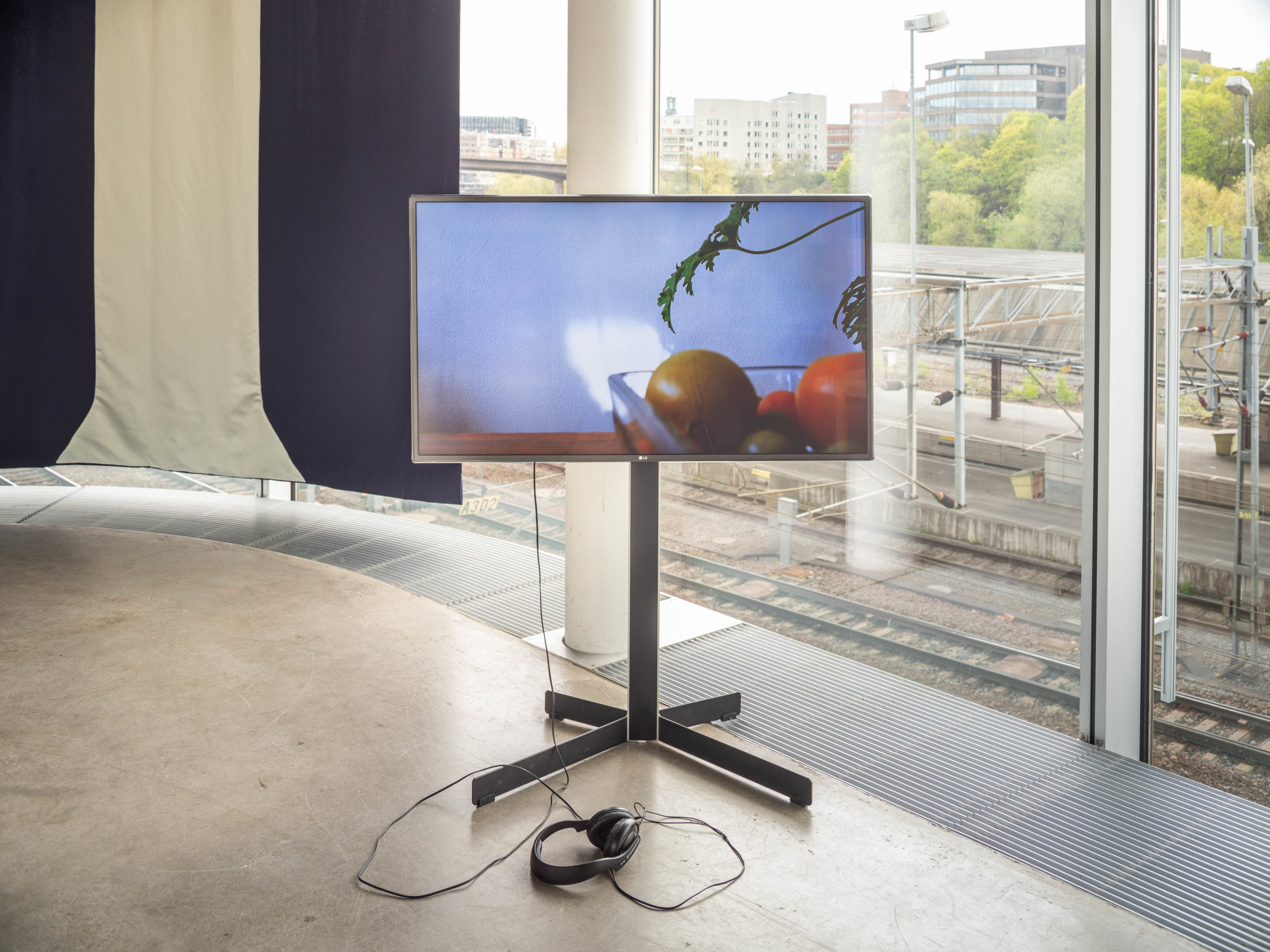Kategori: 2020
Luleåbiennalen 2020: Tiden på jorden
Dimen Abdulla, Linnea Axelsson, Chto Delat?, Giorgi Gago Gagoshidze, Elisabete Finger & Manuela Eichner, Aage Gaup, Apostolos Georgiou, Beatrice Gibson, Maria W Horn, Thomas Hämén, Susanna Jablonski, Ingela Johansson, Kapwani Kiwanga, Birgitta Linhart, Hanna Ljungh & Mattias Hållsten, Fathia Mohidin, Santiago Mostyn, Christian Nyampeta, Ingrid Elsa Maria Ogenstedt, Didem Pekün med KHORA, Charlotte Posenenske, Sofia Restorp, Iris Smeds, Augusta Strömberg, Isak Sundström, Svärta (Yngve Baum, Jean Hermanson, Odd Uhrbom), Erik Thörnqvist, Cara Tolmie, Tommy Tommie, Danae Valenza, Ana Vaz, Peter Weiss & Hans Nordenström, Mats Wikström, Måns Wrange, Markus Öhrn
21.11 2020 – 14.2 2021
Norrbotten
Luleåbiennalen sprider sig över den vidsträckta regionen Norrbotten. Den här gången genomförs biennalens utställningar och konsthändelser i Luleå, Boden, Malmberget, Storforsen, Arjeplog och Korpilombolo: i en evakuerad skola, i en kyrka, på ett silvermuseum, i konsthallar, i ett före detta fängelse och på regionens länskonsthall.
Luleåbiennalen är en internationell biennal för samtidskonst, där globala och hyperlokala perspektiv förenas i platsspecifika situationer. Förutom ett tiotal utställningar inkluderar 2020 års upplaga ett turnerande litteraturprogram, dramatik, radio och en online-baserad journal.
Luleåbiennalen 2020 tar grepp om den spekulativa frågan om vad ”realism”, som begrepp, paradigm och konstnärlig ism, skulle kunna betyda idag. De inbjudna konstnärerna berättar genom sina verk om verkligheter relaterade till samhälleliga system: Byråkrati, massmediala logiker och industriell infrastruktur; men de föreslår också inbrott som utmanar och kastar omkull dessa rådande ordningar: genom strejken, psyket, skådespelet, magin och inte minst konsten själv.
Realismens tidsaxel sträcker sig från artonhundratalets andra hälft till nittonhundratalets första. Dess mångsidiga projekt bottnade i en generell vilja att porträttera samhället som det i verkligheten tedde sig i sin råhet, vardaglighet och med de orättvisa system som det innefattar. Realismen framträdde å ena sidan som estetisk konvention men framförallt vad beträffar de nya motivvärldar som nu uppkom inom konsten. Det realistiska projektet företräddes inledningsvis av en intellektuell borgarklass men kom senare också att involvera konst och litteratur där arbetarklassen tog plats som agens och tema, denna senare period med påfallande politisk udd som ofta benämns som social realism eller socialistisk realism.
När vi nu blickar tillbaka mot realismens tradition och placerar den i en urartad samtid, är det utan fasta tyglar eller skyldigheter gentemot historien. Vad vi återbesöker är en konstnärlig ambition: att försöka få världen att framträda som hel. I detta konstnärliga arbete uppdagas ett mod besläktat med galenskap. En hämningslös akt som innebär att ge sig i kast med det omöjliga – att foga ihop en splittrad värld och ge den mening. I små och stora exempel tecknar biennalens konstnärer perspektiv på egna ordningar av världen.
Den realism som gestaltas på Luleåbiennalens olika scener rör sig ofta långt bort från en avbildande eller dokumentär tradition. Istället framträder verkligheten i verken som ett slags teater, iscensatt, besjungen, förfrämligad och inte sällan helt absurd. Kanske kan dessa skådespel hjälpa oss att ompröva realismens innebörd och vår faktiska agens – under vår tid på jorden.
Karin Bähler Lavér, Emily Fahlén och Asrin Haidari,
curatorer Luleåbiennalen 2020
Läs mer på biennalens hemsida
Upplopp är att älska vår överlevnad
The struggle over history is the struggle for life, recognition and reparation. The conditions for an independent historical narrative are a recurring issue within the history of different movements. Which narratives are given a voice, which are suppressed? How is the ongoing struggle over history expressed today in different contexts? Participants: Judith Kiros, Stefano Harney och Fred Moten.
Fabriksflickorna – De viljefulla textilarbetarna
Det konstnärliga projektet: Fabriksflickorna – De viljefulla textilarbetarna organiserar en utställning och konferens på Mint konsthall i ABF-huset i Stockholm. Under veckan återaktiveras delar av pjäsen Fabriksflickorna – makten och härligheten, i en utställning av Åsa Norman (Sverige) textilkonstnär och Frida Hållander (Sverige) PhD, konsthantverkare. Pjäsen hade premiär i Skellefteå i regi av Suzanne Osten och Margareta Garpe 1980. Konferensen vill lyfta fram och diskutera textil- och hemindustrins kvinnors villkor, kunskaper och motstånd; deras viljefullhet och egensinne, som kommer till uttryck i organisering, yrkesstolthet och strategier.
Fabriksflickorna – De viljefulla textilarbetarna
30.9 – 4.10 2020
Åsa Norman & Frida Hållander
Mint, ABF Stockholm, Sveavägen 41, Stockholm
Det konstnärliga projektet: Fabriksflickorna – De viljefulla textilarbetarna organiserar en utställning och konferens på Mint konsthall i ABF-huset i Stockholm. Under veckan återaktiveras delar av pjäsen Fabriksflickorna – makten och härligheten, i en utställning av Åsa Norman (Sverige) textilkonstnär och Frida Hållander (Sverige) PhD, konsthantverkare. Pjäsen hade premiär i Skellefteå i regi av Suzanne Osten och Margareta Garpe 1980. Konferensen vill lyfta fram och diskutera textil- och hemindustrins kvinnors villkor, kunskaper och motstånd; deras viljefullhet och egensinne, som kommer till uttryck i organisering, yrkesstolthet och strategier.
Norman och Hållander visar i utställningen delar av det fleråriga konstnärliga projektet Fabriksflickorna – De viljefulla textilarbetarna genom materiella – konsthantverkliga undersökningar – samt arkivmaterial och ljud. Till konferensen är konstnärer och forskare inbjudna från de nordiska länderna, där de kommer att hålla i föreläsningar och presentationer för att skapa ett nordiskt sammanhang för en fördjupad diskussion om textilproduktion och hemindustri.
Projektet genomförs med stöd från Konstnärsnämnden, Nordisk kulturfond, Helge Ax:son Johnssons stiftelse och Byggnads kulturstipendium samt i samarbete med Iaspis. Utställningen och konferensen äger rum under Stockholm Craft Week 2020.
Program för konferensveckan:
Onsdag 30/9
Utställningen öppnar! Öppettider: 16.00-20.00.
Torsdag 1/10 konferensdag 1, lokal: Katasalen, våning 1
Utställningen öppen 12:00-18:00
10:00-11:30 Inledande föreläsning av Åsa Norman (Sverige) textilkonstnär, och Frida Hållander (Sverige) PhD, konsthantverkare, de presenterar utställningen och konferensen samt berättar om det pågående konstnärliga projektet Fabriksflickorna – De viljefulla textilarbetarna. Tjia Torpe (Sverige), pedagog och producent, kommer berätta om pjäsen Fabriksflickorna – makten och härligheten. Föreläsningen hålls på svenska.
13:00-14:30 Leena Enbom (Finland) doktorand i social och ekonomisk historia vid Helsingfors universitet, kommer presentera sitt pågående avhandlingsprojekt om hemindustri. Hemindustriell produktion var en del av arbetsmarknaden i det urbaniserande Finland från slutet av 1800-talet till 1960-talet. Föreläsningen kommer också att diskutera olika institutioners strategier för att hjälpa fattiga, där bland annat hantverk och sömnad användes. Föreläsningen hålls på engelska.
15.00-16:30 Malin Nilssons (Sverige) PhD ekonomisk historia, verksam forskare vid Ekonomisk historiska institutionen vid Lunds universitet. Hon kommer presentera delar av hennes avhandlingsarbete Taking work home: Labour dynamics of women industrial homeworkers in
Sweden during the second industrial revolution från 2015, samt om hennes pågående forskningsprojekt där hon fokusera på hur kvinnors hembaserade textilproduktion blev ett politiserat ämne i Europa i slutet av 1800-talet. Föreläsningen hålls på svenska.
Fredag 2/10 Konferensdag 2, lokal: Katasalen våning 1
Utställningen öppen 12:00-18:00
10:00 -11:30 Sushmita Preetha (Bangladesh) aktivist, forskare, journalist, och Karin Elfving (Sverige) journalist och etnolog, kommer föreläsa om dagens textilarbetare i Bangladesh och hur deras rättigheter ständigt kränks och hur sårbart deras hälsotillstånd är, samt om hur Covid-19 har drivit dessa arbetare i ytterligare svårigheter. Preetha och Elfving kommer också att inkludera svaren från några av de svenska textilmärkerna. Föreläsningen hålls på engelska.
13:00-14:30 Franz Petter Schmidt (Norge) textilkonstnär och konstnärlig forskare vid KhiO – Konsthögskolan i Oslo, kommer presentera sitt konstnärliga avhandlingsprojekt Reflection, Weaving Fabrics for Suits, (2018), som berör textilfabriken i Sjølingstad Uldvarefabrik i Norge, och är en undersökning om textilindustrins produktion genom känsla, längtan, tillhörighet, minne, stolthet och att vara queer. Föreläsningen kommer också fokusera kring ett nytt arbete där han undersöker en dagbok skriven av vävaren Malli Berge mellan åren 1925-1942. Föreläsningen hålls på norska.
15:00-16:30 Emelie Röndahl (Sverige) doktorand på HDK – Göteborg Universitet i konsthantverk, presenterar sitt pågående konstnärliga avhandlingsprojekt ”Crying Pixels: a practitioner’s narrative through woven rya – aspects of time in hand made practice”. Föreläsningen hålls på svenska.
Lördag 3/10 Konferensdag 3, lokal: Hjärtat entréplan
Utställningen öppen 12:00-16:00
11:00-12:30 Munish Wadhia (UK, Sverige) konstnär, kommer presentera sitt pågående arbete om tändsticksindustrin och Jönköpings Tändsticksfabriks AB. Wadhia kommer också presentera sitt arbetet ”Signs taken for wonders” där han i verket återvänder till de bilder och objekt som omgav honom under uppväxten, men med en dekolonial blick som osäkrar deras givna betydelse. Ett verk som framför allt berör erfarenhet från textilfabriker. Föreläsningen hålls på engelska.
13:00-14:00 Marie Hållander (Sverige) verksam frilansande poet och som lektor vid Södertörns högskola. Hon kommer presentera det litterära projektet ”Bland textildammets flickor och maskiner” där hon utgår från textila berättelser och arkiv från Sjuhäradsbyden i Västergötland. Presentationen hålls på svenska.
14:00-14:30 Nino Mick (Sverige) verksam som frilansande poet och föreläsare, hen kommer läsa delar från sin pågående roman som handlar Berta Bäckman (f. 1860) och andra arbetare i tändsticksfabriken i Tidaholm. Den historiska romanen rör sig på två tidsplan, 1875 – tiden för den stora brandkatastrofen där 50 flickor omkom i fabriken, 1909 – storstrejken. Presentationen hålls på svenska.
15:00 -17:00 Maskningsaktion, längs med Sveavägen, start utanför ABF-huset, offentligt performance och demonstration som leds av Frida Hållander & Åsa Norman.
Söndag 4/10
Utställningen öppen 12:00-16:00
Illustration: Hanna Stenman
Historien är inte slut (12 februari 1934)
Welcome to an evening of lectures and presentations arranged by the independent research group Agentur, on Thursday, September 17, 2020, 5 pm. Please note that the number of seats is very limited! RSVP vital!
History Is Not Over (February 12, 1934)
A report by Agentur, within the framework of the research project The Aesthetics of the Popular Fronts.
On February 12, 1934, tens of thousands of people took to the streets in Paris, to protest against the advances of fascism. A few days earlier, extreme right and royalist organisations had held a large manifestation in the city, which had deteriorated into deadly riots and an improvised coup attempt. The threat was real: European fascism was gathering its forces. At the same time, the opposition was hopelessly fragmented. Liberals, social democrats, and communists were set violently against each other. Would their separate demonstrations collide in new street fights, in evidence of the paralysis of the opposition?
In March of the same year, the author Marc Bernard published his account of the events of those days, The Workers’ Days of February 9 and 12. In this short book – the mythical and mythologizing foundational text of Popular Front literature – Bernard documents what happened then, in careful detail. The demonstrations did not collide, they were united into one. The opposition set their differences aside in favor of a united front against a common enemy. The French Popular Front was created, and its model soon spread to other countries and continents. A chapter was opened in the history of anti-fascist organization.
History Is Not Over (February 12, 1934) takes its cue from Bernard’s text, which is now for the first time published in Swedish translation. It is a text that poses questions to the present: Is it still possible to think unity in resistance as a political and aesthetic principle? Is there still a progressive tradition that we can draw upon, and that stretches back to the moment of the popular fronts? If so, what continuities can we invoke? What discontinuities must we assert? With readings, presentations, artistic contributions, and critical commentaries by Emily Fahlén, Jörgen Gassilewski, Martin Högström, Ingela Johansson, Emma Kihl, Samuel Richter, Kim West, and Ellen Wettmark, we invite to common reflection regarding a central event in the cultural history of anti-fascism.
History Is Not Over (February 12, 1934) initiates a series of reports produced by the independent research group Agentur, within the framework of the research project The Aesthetics of the Popular Fronts. The reports take the form of public events, arranged at different places and institutions in Sweden and abroad during the fall of 2020 and the spring of 2021; videos based on documentation of the events, directed by Agentur, and published on digital platforms; and printed publications, produced in collaboration with a number of Swedish and international publishing houses, platforms, and magazines.
The event History Is Not Over (February 12, 1934) – an evening with readings, presentations, critical commentaries, and discussions – takes place on Thursday September 17, 2020, 5–8 pm, at the art center Mint, located at the Workers’ Education Association (ABF), Sveavägen 41, Stockholm, Sweden. There is a very limited number of open seats for this event. RSVP to info@agentur.ooo (first come first served). Please note that the event will be documented on video. Language: Swedish. Welcome!
The video History Is Not Over (February 12, 1934), based on documentation of the event, as well as on specifically commissioned short films and presentations, will be published on October 15 at m-i-n-t.se and agentur.ooo. Tune in!
The publication History Is Not Over (February 12, 1934) will be published in the fall. The volume will contain Marc Bernard’s book in Swedish translation, together with essays and artworks based on the contributions to the event and the video. A joyful foray into the intellectual landscape of deep anachronism!
Thanks to Fabrique éditions, Stella Magliani-Belkacem, Michele Masucci, Benjamin Thorel, and our collaborating partners.
Coming reports
Must Be Written Later: Titanic October 15 / online November 8 / Chateaux in November.
Culture House Culture House Culture House: Cyklopen October 30 / online November 22 / Stockholmstidningen in December.
To Philosophize With Labor: Biskops Arnö week 47 / Tydningen in January.
For more information, see here.
About Agentur
Agentur is an independent research group for critical cultural production, based in Stockholm. Committed to an ideal of social equality, it seeks to invent new forms, methods, models, and functions for progressive cultural work in a new, postdigital public sphere and an increasingly precarious labor market. Agentur operates as a multidisciplinary critique bureau. It conducts longterm research projects on issues of public interest in a polarized and fragmented present. Among Agentur’s participants there are poets, artists, critics, researchers, designers, and public servants. In 2020–21, Agentur conducts the research project The Aesthetics of the Popular Fronts.
About The Aesthetics of the Popular Fronts
“Popular Fronts” was the common name of the coalitions of liberal, social democrat, and communist parties that were formed in several countries during the 1930s, in order to establish united fronts against the rise of fascism. Artists and authors, filmmakers and journalists, cultural workers and politicians mobilized for the purpose. The research project The Aesthetics of the Popular Fronts is based on detailed studies of artworks they created, texts they wrote, projects they realized. The aim is to draw up a provisional map of a historical, cultural, and social situation, in order then to ask if that history can still be our history. Is there a tradition of anti-fascist unity politics that stretches back to the moment of the Popular Fronts, with which we may still be able to identify? The immediate background to the project is the rise of the new far right in Sweden, Europe, and globally today. It poses the question of how, at what levels, and with what means we can in the most effective way counteract that rise culturally and politically.
The project is supported by Kulturbryggan.
FILMFORM RE:VIEW - Mint
Avgångsutställningen av Konstfacks masterprogram i Konst
Alexandra Larsson Jacobson, Danae Valenza, David Torstensson, Elise Léonin, Ferdinand Evaldsson, Henning Rehnström, Ingrid Gustafsson, Jonas Törnkvist, Josefin Jussi Andersson, Luki Essender, Maria Kulikovska, Marija Griniuk, Muhammad Ali, Petronella Petander, Tony Karlsson Savci
5.6 – 16.6 2020
Mint, ABF Stockholm, Sveavägen 41, Stockholm
När ett verk ställs ut blir det något i världen. Det möter en betraktare, ett rum, en miljö med ljud, ljus, tak och väggar. I utställning ges verket ett delvis oförutsägbart liv, i situationen testas dess effekter: Griper det tag? Ruskar det om? Sår det frön i våra minnen? Därför är utställandet en given del av den konstnärliga praktiken: då prövas innebörden av att befinna sig i världen – som konstnär.
I årets avgångsklass på masterprogrammet i konst tar vi del av en imponerande bredd av konstnärliga arbeten. Dessa verk tolkar verkligheten och omförhandlar den, destillerar den genom undersökningar, aktioner och lyssnande praktiker. De tar form genom måleri, film, skulptur och sång. Genom radikalism, omsorg och fattigdom, spontanism, sömnlöshet och museologi. Tydligt visar de på konstens omfång och på dess tankeväckande potential.
I år etablerar klassen ett samarbete med den nystartade konsthallen Mint, belägen i ABF-huset i centrala Stockholm. Ett hus som arbetarrörelsens bildningsförbund öppnade i början av 1960-talet och som sedan dess har fungerat som ett centrum för folkbildande verksamhet i staden. Detta är inte ett traditionellt utställningsrum med fogliga vita väggar och tysta rum, utan en miljö som uppmuntrar till installation i lyhörd dialog med befintliga miljöer och dess säregenhet. Verken visas i danssalar, källarutrymmen och trappavsatser, genom speglingar, dialoger och inbrott. Utställandet som praktik prövas således ytterligare ett varv när den närmar sig världen och dess brokighet.
Grafisk form: Linda Hallstan
Konstfack i samarbete med ABF Stockholm.
I Am Not One
Anna Andersson, Cara Tolmie, Isak Sundström, Jakob Krajcik, Jenny Bergman, Lina Bjerneld, Magnus Thierfelder Tzotzis, Nacho Tatjer, Nanna Nordström, Nathalie Gabrielsson, Roxy Farhat, Stephen McKenzie, Susanna Jablonski, Zhou Tao
8.5–14.6 2020
Bonniers konsthall, Torsgatan 19, Stockholm
Den kris som svenskt konstliv går igenom i samband med covid-19-pandemin, och den påtvingade eller frivilliga isolering vi alla fått erfara, påminner oss om att vi inte mår särskilt bra ensamma. Därför har fem konstorganisationer – Bonniers Konsthall, hangmenProjects, Index, Mint och Signal – experimenterat med ett gemensamt projekt och tillsammans arbetat fram utställningen I Am Not One.
Pandemin är inte utställningens tema, utan snarare dess upprinnelse. Genom en associativ tankekedja har ett antal verk och konstnärskap valts ut av respektive part. Snarare än ett samstämmigt curatoriskt argument kan utställningen betraktas som ett slags montage. Verken erbjuder infallsvinklar på den situation vi befinner oss i just nu. Konsten är en plats för gemensamt tänkande och den ryggar inte för det svåra. Istället för att presentera svar eller lösningar tillåter konsten oss att stanna i det komplexa och paradoxala som genomsyrar vår värld: existentiellt, poetiskt och materiellt.
Samarbetet är ett sätt att uppmärksamma våra olika organisationers praktiker och institutionella förutsättningar. Krisen som vi nu ser i den svenska kultursektorn är sannolikt den värsta i modern tid och vi kommer att behöva olika slags hjälp för att klara den. Ett påtagligt behov av gemenskap och stöd har uppstått, samt en vilja att visa att konstlivet måste bestå.
Vi vet inte när vi kommer att kunna mötas igen men sannolikt kommer det att dröja. När det är möjligt vill vi gärna bjuda in er till ett samtal där vi tillsammans kan diskutera vad vi vill ska följa efter krisen. Ett tillfälle att undersöka nya former av gemenskaper och att reflektera över konsten, konstnärernas och konstinstitutionernas framtid. Den här utställningen kan ses som en första inbjudan.
A night with Armin Lorenz Gerold & Eli Levén
Welcome to an evening with performances, poetry and bar at Konsthall C! During the evening participating artist Armin Lorenz Gerold (Berlin) will perform under his alias wirefoxterrier, and writer Eli Levén (Stockholm) will read from his upcoming book, to be published by Norstedts in August. This event marks the final weekend of this exhibition.
The performance starts 7:30
wirefoxterrier started as an online screen name created by Berlin based artist Armin Lorenz Gerold releasing sentimental song sketches and mixtapes into the tumblr/soundcloud pop ecosystem. His 2018 release ’Sex (play and being played), initially part of his self-released ‚fan-fiction‘ series ‚Radio Prishtina‘ became an almost coincidental feature on the viral TV show SKAM. Examining how virality shapes current writing, sounds and production methods, wirefoxterrier will perform a few songs of his upcoming first extended play Looking (tbr spring 2020) at Konsthall C.
https://soundcloud.com/wirefoxterrier
Eli Levén is a novelist and screenwriter. His debut ”Du är rötterna som sover vid mina fötter och håller jorden på plats” was adapted for film by Eli as “Something Must Break” and directed by Ester Martin Bergsmark. The duo also made the hybrid documentary “She Male Snails” together. In August 2020 Eli’s new novel will be published by Norstedts. An adaptation by the novel, to be directed by Eli, is currently under development.
’The physical world was still there’
The physical world was still there but this exhibition turns its back on it. From a close perspective sound, video, painting and objects share the joy and fear of temporal ecstasy, rush, heat and mental confusion. When someone puts their hands on your body and your blood vessels seem to merge, when the last drink of the sun blurs your mind, when time seems so thick you lose any concept of that which was and will be, when the night is in motion.
Curated by Emily Fahlén and Asrin Haidari (Mint).
Free entry.
In collaboration with ABF.
